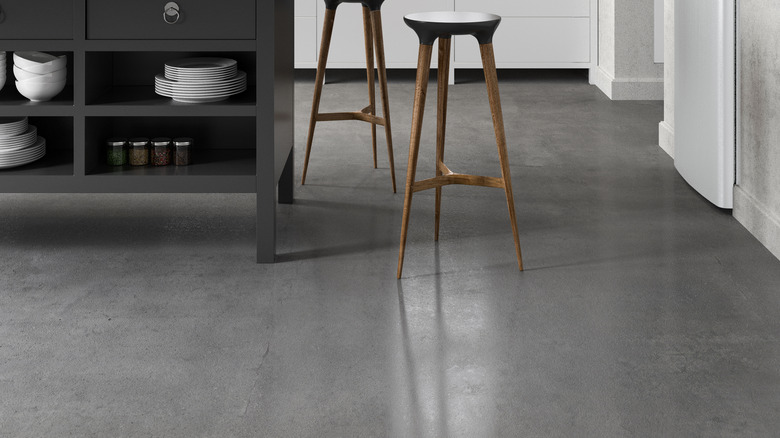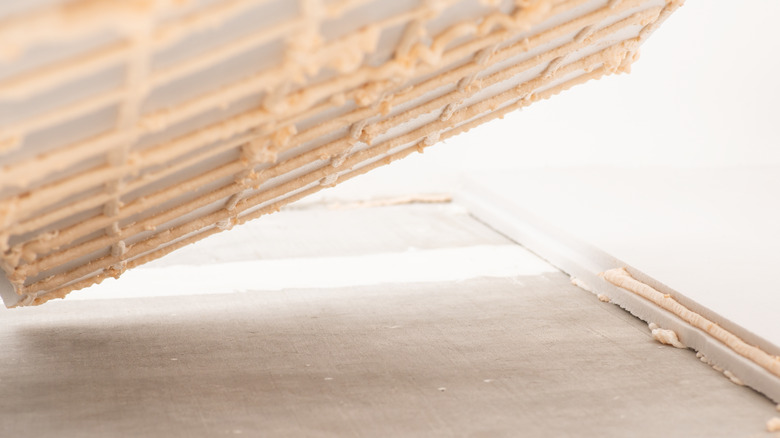Why Your Concrete Floors Are So Cold (And What To Do About It)
Concrete floors are a popular choice in modern home design. They offer a sleek and minimalist aesthetic that can be stylish and practical. However, if your floor lacks insulation, your house could feel cold. With the right knowledge and know-how, you can avoid the problem. Concrete has a high thermal mass, which means it can absorb and store heat energy during the day and release it at night. This can be beneficial in warm climates where the sun can heat up the floor during the day, but it can be a challenge in colder climates where the temperatures are low more consistently. Additionally, concrete floors can be affected by the temperature of the soil beneath them, which can also impact the floor's temperature.
Concrete is a versatile and durable material, making it an attractive option for flooring in many homes. Concrete floors have a high heat capacity and can store heat. Consequently, there are easy ways to warm them up. Simple fixes such as insulation, floor heating, and good use of natural light and heat can make all the difference. In addition, this type of flooring is strong and resistant to wear, making it suitable for high-traffic areas.
Insulation and cleaning
Insulation in a home is a crucial factor in maintaining a comfortable temperature in a room. By properly insulating a space, you can reduce heat transfer between the inside and outside of the building, keeping the room at a consistent temperature. If floor temperature is a concern, consider whether you can heat the room with natural sunlight or extra insulation for a room that has limited light.
Cleaning concrete floors is also relatively easy. They are low-maintenance and can last for decades, making them a cost-effective choice in the long run. Best of all, they are resistant to both water and fire. In addition to its aesthetic appeal and durability, concrete flooring offers several environmental benefits. It is made from readily available raw materials and requires less energy to produce than other flooring options, such as hardwood or tile.
Keep in mind that some rooms are better suited for concrete flooring than others. The size and layout of a room can also impact a concrete floor's temperature. Larger rooms with high ceilings can feel colder than smaller, more insulated spaces. Additionally, rooms with a lot of windows or south-facing windows can benefit from natural light and heat, while rooms with limited natural light may feel colder.
How to keep your concrete floors warm
Insulation can be added to concrete floors by various means, including the use of insulation boards or radiant heating systems. To further insulate your concrete floors, consider installing insulation boards, underlayments, or moisture barriers beneath the floor. These materials can help to reduce heat transfer and keep your floor at a more comfortable temperature.
Radiant heating systems, such as underfloor heating or hydronic heating, can effectively warm concrete floors, too. These systems work by circulating heated water through pipes embedded in the floor, providing a consistent and comfortable heat source that warms the entire room. Because concrete floors absorb heat during the day and release it at night, having large windows on the south-facing side of your home can allow you to take advantage of the sun's warmth. It will also reduce the need for additional heating.
Though incorporating heating systems can be pricey, there are more cost-effective ways to keep concrete floors warmer, such as adding area rugs or carpets, which can provide a layer of insulation and a cozy surface for your feet. These materials can help to trap heat and prevent the concrete from absorbing it, making the room feel warmer. The key to adding concrete floors in your home is to utilize a game plan and be flexible. Take the natural features of your house — including how much sunlight you get and where your windows are placed — and align them with the right heating methods for your budget.


